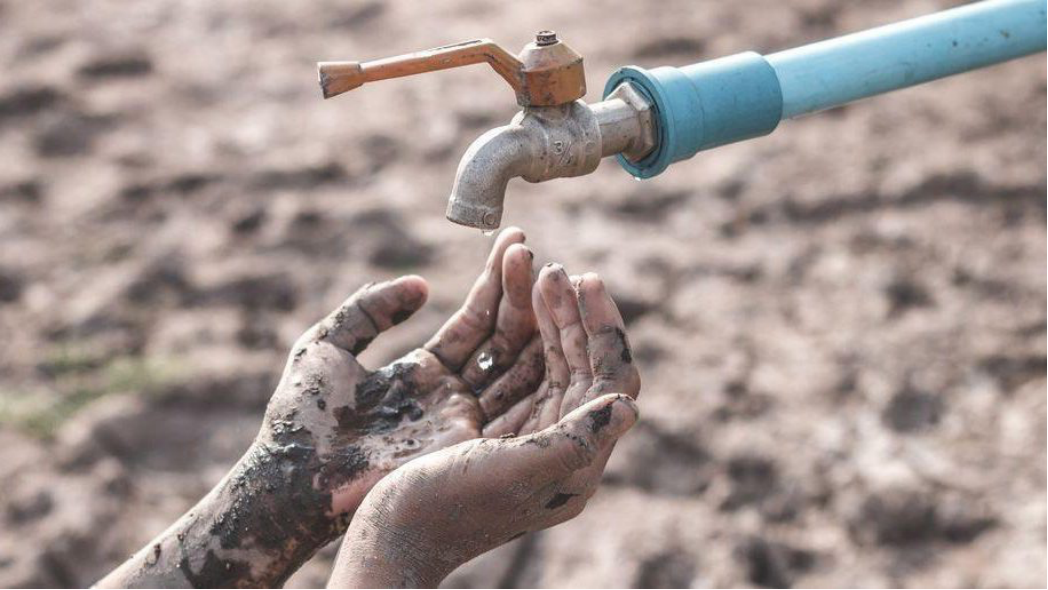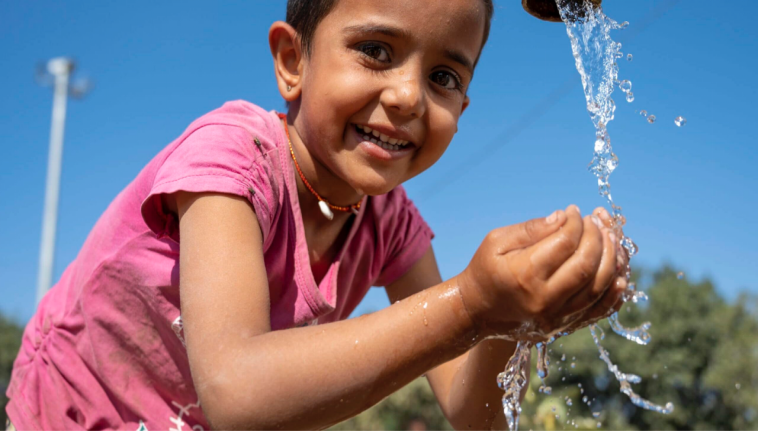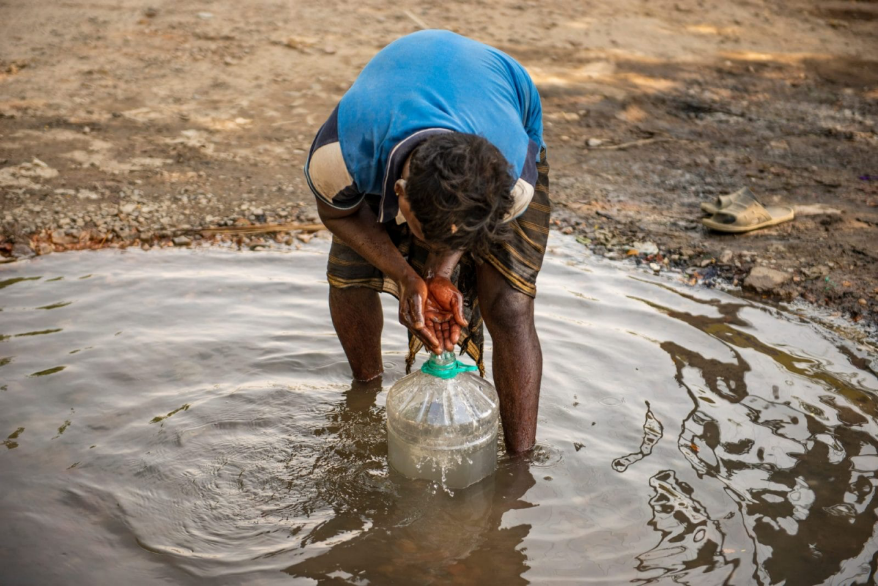Water is a fundamental necessity for human survival, yet millions of people worldwide struggle to access clean and sufficient water for their daily needs. The scarcity and pollution of domestic water sources have become pressing global issues due to a combination of environmental, economic, and social factors. This article explores the reasons behind the growing crisis, its impacts, and possible solutions.

What Causes Water Scarcity?
Water scarcity arises when the demand for water exceeds the available supply. Several factors contribute to this problem:
1. Climate Change: Rising temperatures, prolonged droughts, and unpredictable rainfall patterns have reduced freshwater availability in many regions.
2. Overpopulation: Rapid population growth increases water consumption, leading to depletion of water sources faster than they can be replenished.
3. Urbanization and Industrialization: Expanding cities and industries consume vast amounts of water, often diverting it away from domestic use.
4. Deforestation and Soil Degradation: Loss of forests disrupts the natural water cycle, reducing the ability of ecosystems to retain and filter water.
5. Inefficient Water Management: Poor infrastructure, leakage, and misallocation of water resources contribute to shortages.
Where Is Water Scarcity Most Severe?
Water scarcity affects both developing and developed nations, but some regions are more vulnerable than others:
- Africa: Many African countries, especially in the Sahel and sub-Saharan regions, suffer from extreme water shortages due to arid climates and inadequate infrastructure.
- Middle East: Countries like Saudi Arabia and Yemen rely heavily on desalination and imported water due to their desert landscapes.
- South Asia: Nations like India and Pakistan face severe groundwater depletion due to over-extraction for agriculture.
- Western United States: States like California and Arizona experience periodic droughts and declining reservoir levels.
Why Is Water Pollution a Major Issue?
Even in areas where water is available, pollution poses a significant threat to safe consumption. The main sources of water pollution include:
1. Industrial Waste: Factories discharge toxic chemicals, heavy metals, and hazardous waste into rivers and lakes.
2. Agricultural Runoff: Pesticides, fertilizers, and animal waste contaminate groundwater and surface water supplies.
3. Sewage and Domestic Waste: Untreated sewage and household waste introduce bacteria, viruses, and other pathogens into water bodies.
4. Plastic and Microplastic Pollution: Discarded plastic products and microplastics infiltrate water sources, harming both human health and aquatic ecosystems.
5. Oil Spills and Chemical Leaks: Accidental spills from oil tankers and chemical plants lead to long-term contamination of water bodies.

Who Is Most Affected by Water Scarcity and Pollution?
The impact of water scarcity and pollution is felt across various sectors of society:
- Rural Communities: Many rural populations lack access to clean water and rely on contaminated sources, leading to health crises.
- Women and Children: In many developing countries, women and children bear the burden of collecting water, sometimes traveling long distances daily.
- Farmers and Agricultural Workers: Water shortages reduce crop yields, threatening food security and livelihoods.
- Urban Populations: Even in cities, residents face water rationing, increased costs, and reliance on bottled water due to polluted tap water.
How Does Water Scarcity and Pollution Affect Human Health?
The health consequences of inadequate water supply and pollution are severe:
- Waterborne Diseases: Contaminated water spreads diseases like cholera, typhoid, and dysentery, leading to thousands of deaths annually.
- Toxic Exposure: Heavy metals like lead and mercury in polluted water cause neurological damage and developmental issues in children.
- Malnutrition: Water scarcity affects food production, leading to malnutrition and weakened immune systems.
- Mental and Physical Strain: The daily struggle to find clean water leads to stress, exhaustion, and lower productivity.
When Did Water Scarcity and Pollution Become a Global Crisis?
Water-related challenges have existed for centuries, but the crisis has worsened in recent decades due to industrialization, population growth, and climate change. The 21st century has seen an alarming acceleration in water shortages and pollution, prompting international organizations like the United Nations to declare water security a priority.

What Are the Possible Solutions?
Addressing water scarcity and pollution requires a multifaceted approach involving governments, communities, and individuals:
1. Water Conservation Strategies: Promoting efficient water use, repairing leaks, and implementing water-saving technologies in households and industries.
2. Sustainable Agriculture: Encouraging drip irrigation, organic farming, and responsible fertilizer use to reduce water waste and pollution.
3. Improved Waste Management: Strengthening wastewater treatment infrastructure to prevent contamination of freshwater sources.
4. Reforestation and Ecosystem Protection: Restoring natural landscapes to improve water retention and filtration.
5. Innovation and Technology: Advancing desalination, water recycling, and purification technologies to expand access to clean water.
6. Policy and Regulation: Enforcing stricter environmental laws to prevent industrial and agricultural pollution.
7. Community Education and Engagement: Raising awareness about water conservation and encouraging responsible consumption habits.
Conclusion: What Can We Do to Secure a Better Water Future?
The global water crisis is one of the most pressing environmental and humanitarian challenges of our time. By understanding the causes and consequences of water scarcity and pollution, we can take proactive steps to mitigate the issue. Governments must implement effective policies, industries must adopt sustainable practices, and individuals must make conscious efforts to conserve and protect water resources. Through collective action, we can ensure a future where clean and sufficient water is accessible to all.
----------------------------------------------------------------------------------
SANAKY VIETNAM., CO LTD- Manufacturer of Power, Distribution and Dry-type Transformer as well as RO Water Purifier, Chest Freezer - Upright Cooler, ...
☎ Hotline: (+84) 986 484 544
? hank@sanaky-vn.com
? www.sanaky-vn.com
 Vietnamese
Vietnamese  English
English  Chinese
Chinese  French
French  Spanish
Spanish  Russian
Russian  Arabic
Arabic  Portuguese
Portuguese